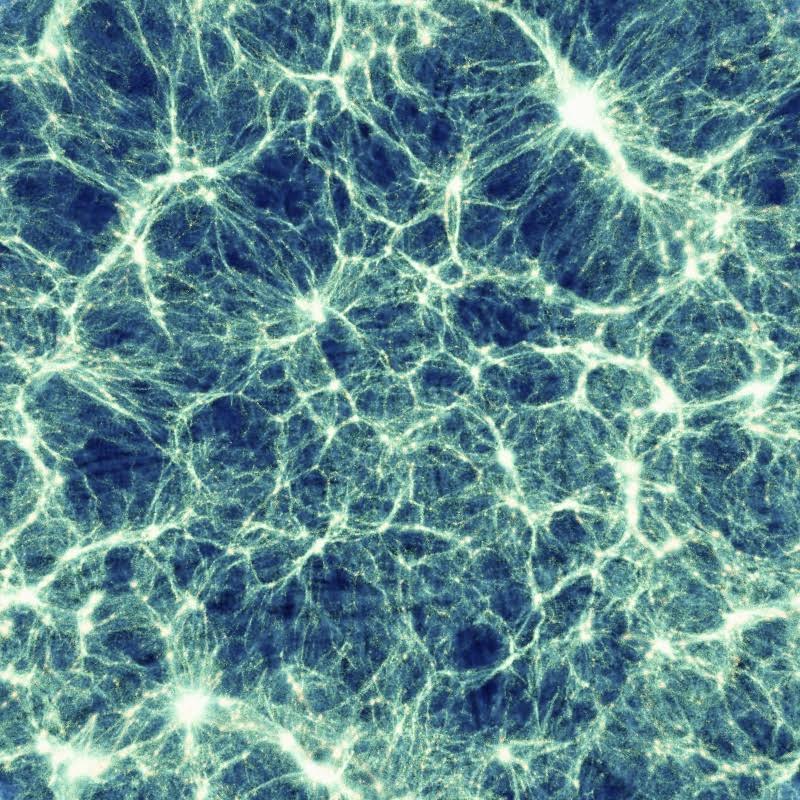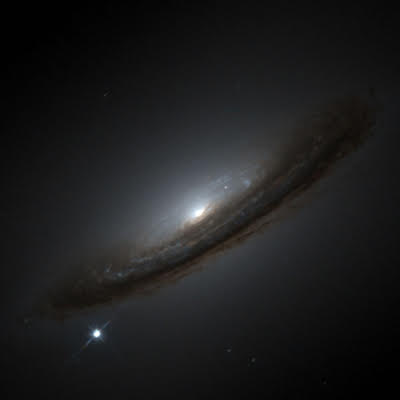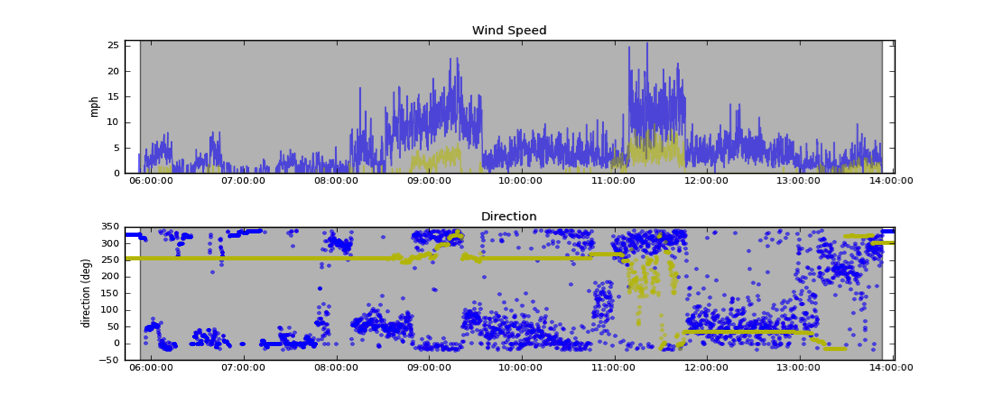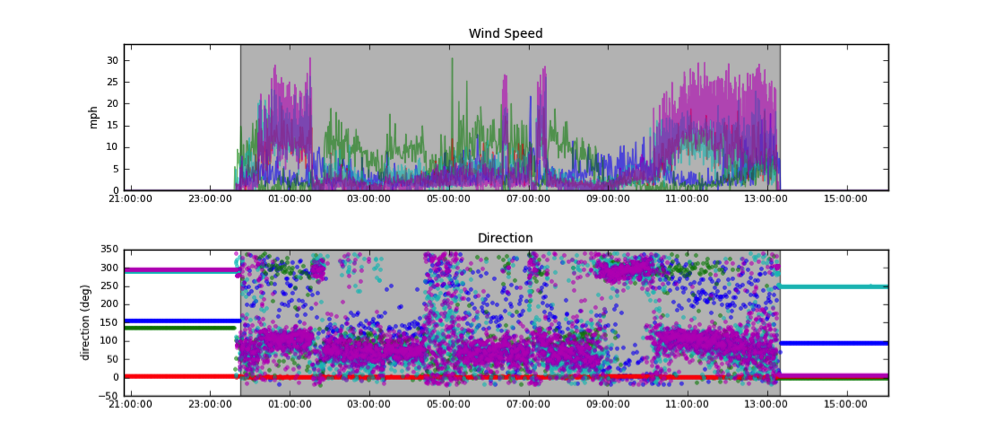Research Projects
ASTR 192: Research Projects Autumn 2015
Below are descriptions of the possible research projects you will work on this quarter. You can find a PDF version here. The advisers listed below will present their projects for 5-10 minutes in class on Friday, October 9th. As part of Writing Assignment 2, you will rank the three projects you find most interesting, explain why they interest you in a couple of sentences, and let me know via email (garofali [at] uw [dot] edu) by October 11th. I will make the final project assignments, splitting you into teams of two, and let you know who your partners and mentors are in class on Monday, October 12th.
Testing our Models for the Stuff Between Galaxies

Advisors: Phoebe Upton Sanderbeck and Professor Matt McQuinn
Description: Most of the matter in the Universe lies between galaxies in the intergalactic medium. The gas there is so diffuse that the it emits very little radiation. The primary way to detect it is to look at very bright supermassive black holes (quasars) and look for the absorption of intervening intergalactic gas in their spectrum. This project is to investigate the properties of intergalactic gas when the Universe was two billion years old and whether it agrees with our best models. Our best models start with a quite-educated guess for the conditions of the post-Big Bang Universe and evolve them forward in a simulation under the equations of gravity and hydrodynamics. We will be looking at a diagnostic of intergalactic gas that has not been carefully compared against cosmological simulations, namely the number of regions that have density ten times or so the cosmic mean density, to test our models for the intergalactic medium.
Project Skills: python (numpy and matplotlib libraries); elementary probability theory (Poissonian statistics and chi^2 statistic—both are much simpler than they sound and no previous knowledge of them is necessary).
Project Tricycle: Spotting Stars that Wheel and Spin

Advisors: John Lurie, Professor Suzanne Hawley, and Kolby Weisenberger
Description: Stars are the fundamental building blocks of galaxies. They emit enormous amounts of energy and produce all of the elements beyond hydrogen and helium, not to mention hosting planets. Determining the fundamental properties of stars — such as their masses, diameters and ages — is a major goal for astronomers. An eclipsing binary is a system of two stars that orbit each other, periodically passing in front of one another as seen from the Earth. The special nature of such systems allows us to determine the stars’ masses and diameters. Furthermore, many stars have spots like those on the Sun. From the spots we can measure how fast the stars are rotating, which tells us about their ages and magnetic fields.
Students will analyze data from the Kepler spacecraft, looking for systems with three distinct cycles, or periods: one due to the binary orbit, and two more due to the rotation of spots on each star. Students will also produce simulations to better understand what types of systems can be detected. Ultimately, the results will help expand our understanding of how stars work.
Project Skills: Basic familiarity with core Python packages, e.g. NumPy, matplotlib. Can commit changes to code with git and push to GitHub
Modeling Kepler Eclipsing Binaries

Advisors: Diana Windemuth and Professor Eric Agol
Description: Most stars come in pairs*. When two stars orbit around each other, they form a binary system. In an eclipsing binary, one of the stars “eclipses” or passes in front of the other and blocks its light as viewed from Earth. This chance alignment between us and the binary allows us to extract fundamental properties of the system, such as the stars’ masses, radii, and temperatures. Accurate measurements of stellar mass, radius, and temperature are crucial across many fields of astronomy. For example, they are imperative to validate stellar evolution models, distinguish whether a transiting exoplanet is rocky like Earth or gaseous like Neptune, and understand how galaxies evolve with time.
This project will examine the light curves of Kepler eclipsing binaries and model each system’s orbits. By analyzing a system’s total light as a function of time, we will determine the orbital characteristics of the stars as well as their size and temperature.
﹡Coincidentally, this project pairs well with Project Tricycle.
Project Skills: python and its core packages (numpy, matplotlib), elemental statistical tests (chi^2 goodness of fit).
Light Curve Analysis and Photometric Redshifts of Supernova Type Ia
Advisors: Lisa McBride and Dr. Rahul Biswas

Description: We now know that the universe is expanding at an accelerating rate due to the presence of dark energy. In order to better understand the nature of dark energy we will explore the effects that different expansion histories of the universe have on various observables. Here, we will work on some of key steps in supernova cosmology, where the intensity of light from supernovae Type Ia (SNIa), which are exploding stars of a specific kind, are recorded as a function of time (called light curves) and used to constrain models of cosmic expansion history.
Usually, supernova cosmology involves characterizing supernova light curves in terms of emperical models, and using these to constrain cosmic expansion. This project will involve studying characterization of such light curves mostly using a python based code called SNCosmo, and simulated data for the LSST, one of the largest upcoming optical ground-based surveys, and one in which the UW astronomy department is deeply engaged in. A major difference between current and future large surveys and older supernova surveys is that the newer surveys will have too many supernovae to follow-up spectroscopically. This study can assess some aspects (like determination of redshift) of the impact of this difference for LSST.
Project Skills: The project mostly involves coding in python, simulating and running analyses on large numbers of supernovae by building on code blocks (will be provided) for individual tasks.
APO 3.5m Dome Flow Analysis


Advisor: Joseph Huehnerhoff
Description: Cooling of large telescopes directly affects the quality of the science obtained.Anemometer stations have been placed around the dome of the 3.5m telescope at Apache Point Observatory to characterize the movement of air in the dome. This project will be to analyze this data in a manner that will allow for understanding of how the dome behaves under typical observing conditions.
The tricky part of the data is that that it is taken at a relatively high cadence over long periods of time. The anemometer stations were also moved around the dome, so the data must be combined to obtain a complete set.
Project Skills: Terminal, VI and / or EMACS, Python (File IO, matplotlib)
Super-massive Black Holes and Galaxy Properties

Advisors: Professor Tom Quinn and Michael Tremmel
Description: From our own Milky Way to large galaxies at the centers of clusters, it appears that all galaxies host at least one large black hole at their center. While we call these central black holes ``Super-massive’’, they are quite small compared to the galaxy as a whole. Therefore the question arises: what effects can these black holes have on the overall properties of the galaxy? Black holes are presumed to power the jets (see image) and Active Galactic Nuclei which are energetic enough to influence the gas in entire galaxy and beyond, but what is the overall effect on the size and shape of the host galaxy? One way to answer this question is to simulate the physics of this process in computer models of a large number of galaxies, and correlate the properties of the black holes with the properties of the galaxies that host them.
In this project, you will be exploring data from a computer model run on one of the largest supercomputers in the country, where a patch of the Universe containing hundreds of galaxies has been simulated. You will use web-based and graphical tools to explore these galaxies, identify the ones with large or active black holes, and discover the correlations between the black hole properties and the properties of the galaxies.
Project Skills: python/numpy/pylab
SPAMS: The Search for Planets Around post-Main Sequence Stars

Advisor: Brett Morris
Description: As of September 2015 more than 5000 exoplanets, or planets orbiting stars other than the Sun, have been discovered. The most successful planet discovery method to date is the “transit method”, which discovers planets by carefully monitoring the brightness of stars. If a star has an orbiting planet and its orbit brings the planet between the Earth and its host star, we can detect a slight dimming in the brightness of the host star during a “transit event” as the planet blocks out some of the star’s light. The Kepler Mission has discovered more than 4000 candidate planets this way, but it mostly focused on searching for planets orbiting “middle-aged” stars like the Sun.
One question that was not answered by the Kepler mission is: what happens to the Kepler planets after their Sun-like host stars die? The Sun will reach the last stage in its life cycle when it becomes a white dwarf – a very dense, small, hot star, roughly the size of the Earth. In the transition to the white dwarf phase, Mercury, Venus and maybe Earth are likely to be swallowed up by the swollen Sun, but more distant planets may survive. Some white dwarfs have been discovered that have metal pollution in their atmospheres, indicative of planetary material raining onto the surface of the star – is that planetary material a destroyed planet? Can we find zombie planets that survive the inferno of stellar death around these still white-hot dead stars?
The goal of this project will be to work with photometry (time-series brightness measurements) of white dwarfs collected by two of last years’ Pre-MAP students from the ARC 3.5 m telescope and the ARCSAT 0.5 m telescope at the Apache Point Observatory. We will search these measurements for transits of undiscovered exoplanets, and put constraints on the minimum size of detectable planets in those data. We will also re-evaluate the SPAMS search strategy and update the SPAMS metal-polluted white dwarf database with recent discoveries. We will observe more white dwarfs with the ARCSAT 0.5 m telescope (remotely) if weather permits. Pending any planets discovered, you will also achieve ultimate glory.
Project Skills: Unix, Python